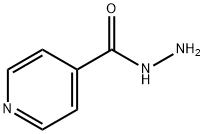Mesityl oxide , 90% , 141-79-7
Synonym(s):
4-Methyl-3-penten-2-one;Isopropylideneacetone, 4-Methyl-3-penten-2-one;Mesityl oxide
CAS NO.:141-79-7
Empirical Formula: C6H10O
Molecular Weight: 98.14
MDL number: MFCD00008900
EINECS: 205-502-5
PRODUCT Properties
| Melting point: | −53 °C(lit.) |
| Boiling point: | 129 °C(lit.) |
| Density | 0.858 g/mL at 25 °C(lit.) |
| vapor pressure | 10.5 hPa (20 °C) |
| FEMA | 3368 | 4-METHYL-3-PENTEN-2-ONE |
| refractive index | n |
| Flash point: | 87 °F |
| storage temp. | Store below +30°C. |
| solubility | 30g/l |
| form | Liquid, Free Of Suspended Matter |
| color | Clear |
| Specific Gravity | 0.86 |
| Odor | Strong; peppermint; honeylike. |
| explosive limit | 1.4-10.1%(V) |
| biological source | synthetic |
| Odor Type | vegetable |
| Water Solubility | 28 G/L (20 ºC) |
| Merck | 14,5908 |
| JECFA Number | 1131 |
| BRN | 1361550 |
| Henry's Law Constant | (x 10-6 atm?m3/mol):
4.01 at 20 °C (approximate - calculated from water solubility and vapor pressure) |
| Exposure limits | TLV-TWA 60 mg/m3 (15 ppm) (ACGIH),
10-h TWA 40 mg/m3 (10 ppm) (NIOSH);
STEL 100 mg/m3 (25 ppm); IDLH 5000
ppm. |
| Dielectric constant | 15.4(20℃) |
| Stability: | Light Sensitive |
| LogP | 1.37 at 20℃ |
| CAS DataBase Reference | 141-79-7(CAS DataBase Reference) |
| NIST Chemistry Reference | 3-Penten-2-one, 4-methyl-(141-79-7) |
| EPA Substance Registry System | Mesityl oxide (141-79-7) |
Description and Uses
The commercial grade of 4-methyl-3-penten-2-one exhibits an unpleasant grassy-green or pungent, acrylic odor. The pure material has a pleasant, honey-like odor. This substance may be prepared by reacting acetone or diacetone alcohol with iodine or other dehydrating agent; by condensation of acetone over sulfonated polystyrene-divinylbenzene resin used as an ion exchange catalyst.
4-Methyl-4-penten-2-one is used to a small extent as an intermediate in synthesis. Most of it is converted to 4-methyl-2-pentanone by selective hydrogenation. Although 4-methyl-2- pentanone has excellent solvent properties for nitrocellulose, cellulose esters and ethers, copolymers of vinyl chloride – vinyl acetate and other synthetic resins, as well as natural and synthetic rubber, its use as a solvent is limited as a result of its toxicity and chemical instability. The fraction of 4-methyl-4-penten-2-one permitted in solvent systems has been set at 5 vol% (Rule 66 of the Los Angeles, California, Air Pollution Control District). Some of the numerous possible reactions that mesityl oxide may undergo have been used for the synthesis of products such as Budralazine, an antihypertensive agent.
Safety
| Symbol(GHS) |   GHS02,GHS06 |
| Signal word | Danger |
| Hazard statements | H226-H302+H312-H315-H319-H331-H335 |
| Precautionary statements | P210-P280-P301+P312-P303+P361+P353-P304+P340+P311-P305+P351+P338 |
| Hazard Codes | Xn |
| Risk Statements | 10-20/21/22-36/37/38 |
| Safety Statements | 25 |
| RIDADR | UN 1229 3/PG 3 |
| OEB | A |
| OEL | TWA: 10 ppm (40 mg/m3) |
| WGK Germany | 1 |
| RTECS | SB4200000 |
| Autoignition Temperature | 344 °C |
| TSCA | Yes |
| HS Code | 2914 19 90 |
| HazardClass | 3 |
| PackingGroup | III |
| Hazardous Substances Data | 141-79-7(Hazardous Substances Data) |
| Toxicity | LD50 in mice (mg/kg): 710 ±85 intragastric; LC50 in mice (2 hr), rats (4 hr) (mg/m3): 10000 ±270, 9000 ±600 (Ismerov) |
| IDLA | 1,400 ppm [10% LEL] |




